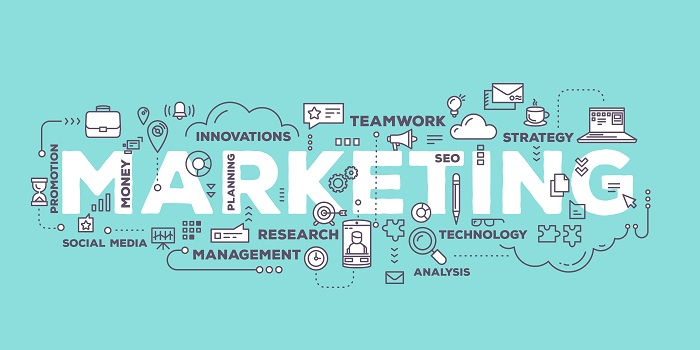
 Data Structure
Data Structure Networking
Networking RDBMS
RDBMS Operating System
Operating System Java
Java MS Excel
MS Excel iOS
iOS HTML
HTML CSS
CSS Android
Android Python
Python C Programming
C Programming C++
C++ C#
C# MongoDB
MongoDB MySQL
MySQL Javascript
Javascript PHP
PHP
- Selected Reading
- UPSC IAS Exams Notes
- Developer's Best Practices
- Questions and Answers
- Effective Resume Writing
- HR Interview Questions
- Computer Glossary
- Who is Who
Sales Vs Marketing: A Detailed Comparison
Every company's sales and marketing departments are crucial cornerstones. They are interconnected and act as a driver for generating income (profit). Building brand and company recognition is the main goal of marketing, but selling translates those audiences into profits by turning prospects into paying customers. Continue reading to find out more about the differences between sales and marketing. A company's marketing and sales departments both have an impact on lead generation and sales. All actions that result in the selling of products or services are referred to as sales. And marketing is the practice of gaining consumers' attention in the products and services being offered for sale. In fact, in smaller businesses, the same person frequently handles both marketing and sales duties. Nevertheless, marketing is distinct from sales, and as a company expands, so do the roles and duties.
What are Sales?
An exchange of goods, services, or property for cash between two or more persons is referred to as a sale. A sale often involves the exchange of commodities or assets for money or other assets between a purchaser and a seller.

Every company has a sales department that is split up into different teams. This team concentrates on marketing their goods and services, the markets they market to, and the users they are trying to reach. A seller is someone who markets goods or services on behalf of an organization or owner. Reaching clients who have shown interest in or are a good fit for your services or products is the objective. This process entails planning, getting ready, coming up with a strategy, making a presentation, getting past obstacles, sealing the transaction, and following up. A powerful sales transaction involves the vendor persuading potential customers of the benefits of the solution.
Each business has distinct divisions for the sale of goods and services, frequently separated into various teams according to ?
The geographic area where the group provides goods and services.
The team must sell goods and services.
Customers who purchase goods and services.
Each team has revenue goals that they must accomplish on a monthly, quarterly, and annual basis. Use promotional offers and discounts, such as coupons, freebies, and other incentives, to draw customers' attention and persuade them to buy your good or service in order to boost sales.
The actual definition of selling will vary depending on your sector, the clients you serve, and the sales strategy you employ. For instance, although some businesses integrate certain aspects of their marketing strategy into sales, others do not. The backbone of a company is commonly referred to as the sales team, and with good reason. In order to boost sales and earnings for the company, the salespeople team is in charge of bringing in fresh clients at the (often virtual) door.
What is Marketing?
Marketing is any activity a business engages in to draw customers to its high-caliber messaging promoting its goods and services. In order to demonstrate product value, foster brand loyalty, and eventually increase sales, marketing attempts to provide distinctive value for customers and potential clients through content. Consumer, customer, and public information are connected to marketers through the function of marketing research. Information is employed to recognize and categorize opportunities and issues. Create, execute, and assess activities. Keep an eye on results. broaden your comprehension gradually. Determine the data required to address these problems, develop information-gathering strategies, control and execute data collection procedures, examine the outcomes, and convey the outcomes and their consequences.
Marketing's goal is to continuously poll consumers, examine their buying patterns online, hold focus group discussions, send out evaluations, and ask one simple question.
"How, when, and where do our customers want to contact our business?"

The goal of marketing is to build interest in the goods and services offered by the business. This is accomplished by market survey, analysis, and knowledge of the interests of the ideal clientele. All commercial operations, including product innovation, distribution channels, sales, and advertising and promotion, are referred to as marketing.
What is the Difference Between Sales and Marketing?
Basis |
Sales |
Marketing |
|---|---|---|
Definition |
A sale is the exchange of a good from a producer to a buyer in exchange for money. The Oxford Dictionary defines selling as "the exchange of things for money or the act of selling something." |
Understanding consumer wants and introducing items are key components of marketing. The American Marketing Association (AMA) defines marketing as "the activity, set of institutions, and procedures for developing, communicating, offering, and exchanging products of value to clients." |
Objective |
The fulfilment of consumer expectations is the main objective of sales. |
Sales and distribution are just two of the activities that make up marketing. The sale of the company's products and services is their principal objective. |
Focus |
Maximizing sales and revenue is the key goal. |
Increasing consumer pleasure is the basic goal of marketing. Additionally, it seeks to market products and services, establish pricing, and make them accessible to clients. We also emphasize post-purchase support. |
Approach |
The approach followed here is very product oriented |
The approach followed here is customer centric or customer orieted |
Strategy |
It follows push strategy |
It follows a pull strategy |
Time period |
It is a very short-term process |
It is a continuous and long-term process |
Expenses |
A significant expenditure goes into selling. It's interesting to note that a company's revenue is produced by the business process of sales. |
Marketing is expensive. Every aspect of marketing, from advertising to logistics, has a price. |
Key Skills |
Great selling, pitching, negotiating and communication skills are required in case of sales. |
A wide knowledge base and problem-solving and analytical skills are required to understand the various combinations and effects. |
The key distinctions between sales and marketing are as follows. Sales and marketing have many differences, but they also have some parallels. They all have as their primary objective the long-term growth and maintenance of the company's revenues.
Conclusion
As brands compete increasingly fiercely to draw consumers to their services and products in order to grow their customer base, marketing is becoming ever more crucial. And this opens up a lot of sales and marketing career options. Creating interest in a product and generating leads or prospects are standard marketing objectives. Marketing initiatives comprise ?
Consumer research to identify client requirements
Product development is the process of creating new products to address current or future needs.
To increase awareness and develop your brand, use product marketing.
Pricing goods and services to generate the greatest long-term profit.
On the other side, sales operations concentrate on turning possibilities into genuine paying customers. Selling entails engaging in direct communication with potential clients to persuade them to buy your product. As a result, sales concentrate on specific persons or small groups of prospective customers, whereas marketing concentrates on the broader public (or at least big groups of people).
Sales and marketing differ greatly from one another, but they do not conflict. Both concepts are crucial to a company's long-term sustainability and are closely intertwined.
Sale is a human-centered function, thus salespeople need to receive the right coaching and rewards to increase morale and make more money. The strongest promotions and distribution channels must be used to enhance the brand's reputation and drive sales because marketing, in contrast, hand, is media-centric.

